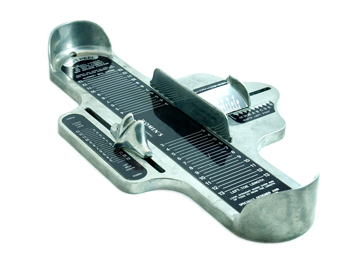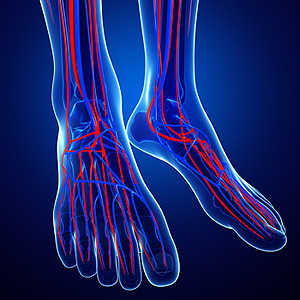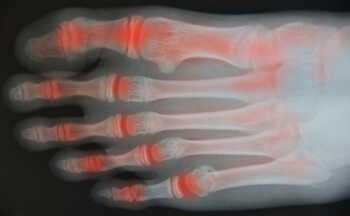Sometimes ankle pain can be caused by an impinged or irritated sural nerve. This condition is known as sural neuritis. The sural nerve runs along the back of the leg, and around the outside of the ankle and foot, providing sensation to these areas as well as to the outer two toes. The sural nerve can become injured or irritated in a variety of ways. It can get stretched and injured during an ankle sprain or some other injury. Also, since its course around the ankle and lateral side of the foot can vary, it may inadvertently get injured during a surgical procedure in the area. Even scar tissue or swelling that occurs after an injury or surgery can affect the nerve. Sural neuritis typically causes a burning sensation, which is sometimes accompanied by tenderness and swelling along the side of the ankle and foot. If you experience this type of pain, it’s a good idea to make an appointment with a podiatrist. If you are diagnosed with sural neuritis, your podiatrist may develop a course of treatment that includes desensitizing the nerve through massage, medications, corticosteroid injections, and specific footwear to offload pressure on the nerve and reduce irritation. Surgery may be necessary if these more conservative treatments do not provide sufficient pain relief.
Ankle pain can have many different causes and the pain may potentially be serious. If you have ankle pain, consult with the podiatrists from Boston Common Podiatry. Our doctors will assess your condition and provide you with quality foot and ankle treatment.
Ankle pain is any condition that causes pain in the ankle. Due to the fact that the ankle consists of tendons, muscles, bones, and ligaments, ankle pain can come from a number of different conditions.
Causes
The most common causes of ankle pain include:
- Types of arthritis (rheumatoid, osteoarthritis, and gout)
- Ankle sprains
- Broken ankles
- Achilles tendinitis
- Achilles tendon rupture
- Stress fractures
- Tarsal tunnel syndrome
- Plantar fasciitis
Symptoms
Symptoms of ankle injury vary based upon the condition. Pain may include general pain and discomfort, swelling, aching, redness, bruising, burning or stabbing sensations, and/or loss of sensation.
Diagnosis
Due to the wide variety of potential causes of ankle pain, podiatrists will utilize a number of different methods to properly diagnose ankle pain. This can include asking for personal and family medical histories and of any recent injuries. Further diagnosis may include sensation tests, a physical examination, and potentially x-rays or other imaging tests.
Treatment
Just as the range of causes varies widely, so do treatments. Some more common treatments are rest, ice packs, keeping pressure off the foot, orthotics and braces, medication for inflammation and pain, and surgery.
If you have any questions please feel free to contact our office located in Boston, MA . We offer the newest diagnostic tools and technology to treat your foot and ankle needs.















